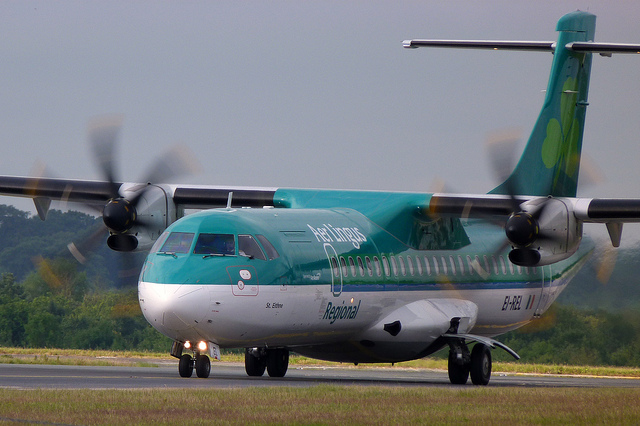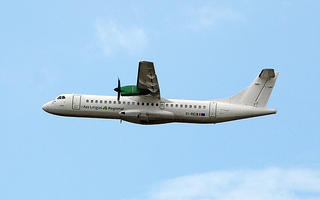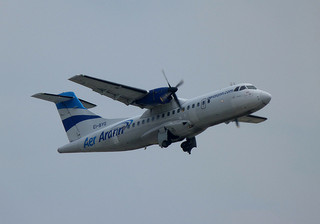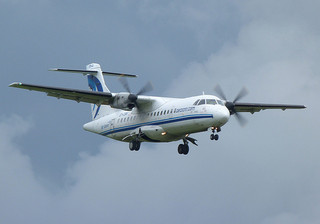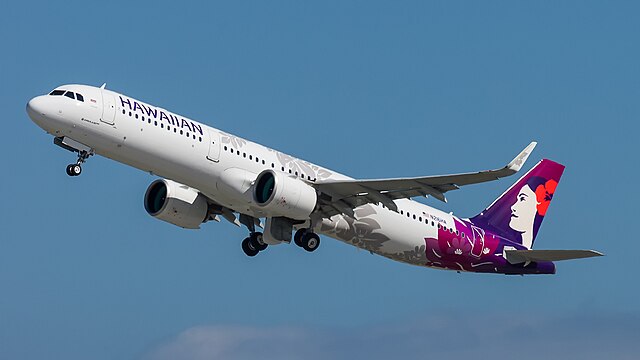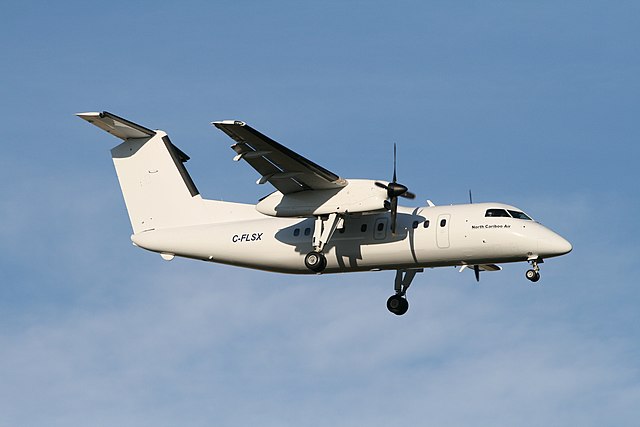Arann AT72 at Cork on Jan 2nd 2014, salted windshield
Last Update: May 1, 2015 / 14:56:50 GMT/Zulu time
Incident Facts
Date of incident
Jan 2, 2014
Classification
Incident
Airline
Aer Arann
Flight number
EI-3729
Departure
Manchester, United Kingdom
Destination
Cork, Ireland
Aircraft Registration
EI-REL
Aircraft Type
ATR ATR-72-200
ICAO Type Designator
AT72
A crew on the ground chimed in asking whether tower could confirm the Arann was experiencing problems with their windshield and advised if the Arann stayed in the hold they would know shortly, they too had problems with their windshield and would be checking shortly. The crew on the ground subsequently reported they had salt on their windshield but had not suffered any problems with the vision through the windshield. Tower told the crew on the ground that the Arann had 30 minutes of fuel left and was holding with about 10nm to go for landing.
The Arann crew declared PAN reporting their windshield was blocked possibly due to salt. Emergency services deployed and took their stand by positions, Cork city brigades also went on alert and deployed to the airport. The crew commenced another approach about one hour after aborting the first approach, winds at that time from 220 degrees at 22 knots gusting 24 knots, next wind check at 230 degrees 33 knots gusting 42 knots, final windcheck just prior to touchdown winds from 220 degrees, 33 knots gusting 49 knots. Tower finally radioed "Good Job!" after the aircraft had safely landed.
The crew was offered a Follow Me but declined stating they didn't need a Follow Me for taxiing to the apron, and subsequently downgraded the PAN.
The airline reported the crew discontinued the approach due to unfavourable wind conditions, after holding for some time to wait for conditions to improve a successful approach was made. All 46 passengers disembarked normally.
On Jan 21st 2014 the French BEA reported that the windshield was obscured due to deposition of salt during flight in coastal stormy atmosphere. The occurrence was rated a serious incident and Irish Authorities are investigating.
On May 1st 2015 the Irish AAIU released their final report concluding the probable cause of the serious incident was:
Probable Cause
Loss of forward visibility due to sea salt accretion on the front windscreens.
Contributory Cause
A confluence of meteorological circumstances including high marine surface winds combined with a lack of precipitation.
The AAIU reported strong gusting winds were forecast at the time of the arrival of the aircraft into Cork. While the aircraft was on final approach to Cork's runway 25 with winds reported at 25 knots gusting 44 knots from 230 degrees, the crew observed an increase of plus 20 knots in their indicated airspeed and went around.
Following the go-around the aircraft was instructed to climb to 3000 feet and to join a left downwind for another approach to runway 25, which took the aircraft over the sea. About 13 minutes after the first approach the aircraft was again established on final approach to runway 25 when the crew initiated a second go-around subsequently reporting they had a problem with their windscreens, they could not see through the windscreens and something blurred their vision through the windshield, the wind screen wipers didn't the obstruction off.
The crew checked conditions in Shannon and Cork. Subsequently the AAIU wrote: "the Commander informed Cork Approach that “the problem I have is that I can’t see out the windscreen.” She reported that it looked like there was a weather cell (visible on the weather radar) ten miles straight ahead and she requested that she could maintain the current heading (330°) and that “possibly the rain in that cell might help clear it…”. The Commander continued that they would go to the edge of the cell and hope that the rain would wash the contamination off because at that time they could see nothing. ATC informed EI-REL of a similar situation in Shannon a couple of weeks earlier in high winds which turned out to be a film of sea salt on the windscreen. The Commander responded that the same thing had happened to a company aircraft that evening but that obviously it wasn’t as bad for them. She had learned this in the earlier telephone communication with the engineering staff."
The AAIU summarized the captain's (40, ATPL, 5,036 hours total, 4,750 hours on type) statement: "The Commander spoke to a company engineer by mobile phone and he informed her that the residue was due to salt accretion, as an Operator’s ATR 72 and an A321 which had recently landed had both sustained small salt build ups on their windscreens. The Commander described how the weather radar was showing evidence of showers and cells on the periphery of the Cork control zone. She requested clearance from ATC to route towards them in an effort to clear the windscreen. She stated that by flying towards the edge of the cells, they managed to clear a fraction of the contamination on the base of the windscreen near the coaming. However, the First Officer soon noticed that the salt residue was reforming on his side. The Commander stated that as there was not much moisture in the weather cells and as the salt residue was thick and dried out, they were unable to completely clear the windscreen but that she did have visual reference on her side through a small gap at the base of the windscreen. Since at that point EI-REL had 1 hour 20 minutes fuel endurance remaining, she elected to make a third approach to RWY 25 at EICK while still having sufficient fuel to subsequently divert and make an approach to EINN without reaching the final reserve fuel figure. The Commander was also conscious that the conditions at EINN were approaching maximum crosswinds across a wet runway and she was reluctant to attempt a landing in such conditions with an obscured windscreen."
The AAIU analysed: "Their first approach to RWY 25 had resulted in a go-around which was entirely due to a significant increase in indicated airspeed on finals. At that time, there was no issue with forward visibility. The aircraft was then positioned back onto finals by radar vectors issued by ATC, while two other aircraft made approaches to EICK. The track followed was initially to the southwest on the runway heading, followed by left turns under radar control, which brought EI-REL back to the east of the airport along a ground track which was south of EICK, close to the coast and at times over the sea at an altitude of 3,000 ft. It is likely that the aircraft windscreens began picking up the sea salt contamination while flying along this track, although its presence at that stage is unlikely to have been of particular significance to the Flight Crew, in the absence of strong external light sources. However, when making their second approach to RWY 25, when the runway lighting would have been the primary external landing aid, their forward vision was obscured to such an extent that they had no alternative but to execute another go-around."
The AAIU continued: "Following the second go-around, the Flight Crew showed good airmanship and crew resource management (CRM) in seeking to fly to areas of shower activity which were visible on their weather radar. They were facilitated in this by ATC and they found areas of moisture which, although not active enough to completely clear the windscreen, did clear a small area of the windscreen on the Commander’s side. The Commander was then able to commence a third approach to RWY 25, using the visual cues which she could see through this small gap in the salt residue. At the time, the First Officer still had no visual reference. As they approached EICK, a shower passed over the airport, which assisted in clearing the windscreen and they were able to carry out a normal landing."
The AAIU continued: "Another ATR 72 landed shortly before EI-REL’s second go-around. It also suffered salt contamination on its front windscreens, although to a lesser extent than EI-REL. The other aircraft had not flown at low level over the sea. It is noteworthy that the Flight Crew of EI-REL and the commander of the other ATR 72 both stated that the windscreen wipers were ineffective in clearing the salt residue. The Commander of EI-REL also stated that she believed that the windscreen heat had exacerbated the issue by drying out the salt and enabling a thick layer to form." and concluded analysis: "The Investigation considers that, given the rarity of this type of event, no specific Safety Recommendations are warranted other than a general raising of awareness through the publication of this Report."
Metars:
EICK 030100Z 22034G47KT 9999 SCT020 BKN040 07/02 Q0976 NOSIG
EICK 030030Z 22026G37KT 9999 SCT020 BKN038 07/04 Q0976 WS R25 NOSIG
EICK 030000Z 22031G51KT 9999 -RA SCT015 BKN040 06/04 Q0977 WS R25 NOSIG
EICK 022330Z 22028G45KT 9999 FEW016 BKN040 08/03 Q0977 WS R25 NOSIG
EICK 022300Z 22027G41KT 9999 FEW016 BKN040 08/03 Q0977 WS R25 NOSIG
EICK 022230Z 22029G44KT 9999 FEW016 BKN040 08/03 Q0977 NOSIG
EICK 022200Z 22023G36KT 9999 FEW016 BKN045 07/03 Q0977 NOSIG
EICK 022130Z 22027G40KT 9999 -RA FEW016 BKN035 08/04 Q0977 NOSIG
EICK 022100Z 23028G39KT 9999 FEW016 BKN050 BKN090 07/05 Q0977 NOSIG
Incident Facts
Date of incident
Jan 2, 2014
Classification
Incident
Airline
Aer Arann
Flight number
EI-3729
Departure
Manchester, United Kingdom
Destination
Cork, Ireland
Aircraft Registration
EI-REL
Aircraft Type
ATR ATR-72-200
ICAO Type Designator
AT72
This article is published under license from Avherald.com. © of text by Avherald.com.
Article source
You can read 2 more free articles without a subscription.
Subscribe now and continue reading without any limits!
Read unlimited articles and receive our daily update briefing. Gain better insights into what is happening in commercial aviation safety.
Send tip
Support AeroInside by sending a small tip amount.
Related articles
Arann AT72 near Manchester on Mar 27th 2013, engine problem
An Aer Arann Avion de Transport Regional ATR-72-500 on behalf of Aer Lingus, registration EI-REL performing flight RE-3728/EI-3728 from Cork…
Arann AT72 at Glasgow on Feb 21st 2013, rejected takeoff
An Aer Arann Avion de Transport Regional ATR-72-500 on behalf of Aer Lingus, registration EI-REL performing flight RE-3227/EI-3227 from Glasgow,SC…
Arann AT72 at Dublin on Mar 30th 2013, nose gear torque link failure
An Aer Arann Avion de Transport Regional ATR-72-200 on behalf of Aer Lingus, registration EI-REI performing flight RE-3255/EI-3255 from Edinburgh,SC…
Arann AT42 at Shannon on Feb 12th 2014, aircraft at gate lifted off due to storm
An Aer Arann Avions de Transport Regional ATR-42-300, registration EI-BYO, was parked at the gate in Shannon for the night after having arrived as…
Arann AT72 at Dublin on Dec 26th 2013, avionics problem
An Aer Arann Avions de Transport Regional ATR-72-600 on behalf of Aer Lingus, registration EI-FAW performing flight EI-3292 from Dublin (Ireland) to…
Aer Arann AT72 at Cork on May 13th 2012, hard landing
The Irish AAIU released their final report reporting the occurrence's rating was changed to serious incident. The AAIU concluded the probable cause…
Arann AT42 at Cardiff on Oct 11th 2013, burst tyre on landing
An Aer Arann Avions de Tansport Regional ATR-42-300 on behalf of Aer Lingus, registration EI-CBK performing flight EI-3296 from Dublin (Ireland) to…
Newest articles
Hawaiian A21N and private C172 at Long Beach on Oct 26th 2023, near midair collision
A Hawaiian Airlines Airbus A321-200N, registration N216HA performing flight HA-70 from Honolulu,HI to Long Beach,CA (USA), was cleared to land on…
Creebec DH8A at Val d'Or on Oct 26th 2023, near collision with terrain
An Air Creebec de Havilland Dash 8-100, registration C-FLSX performing flight YN-238 from Chisasibi,QC to Val d'Or,QC (Canada) with 28 passengers and…
Subscribe today
Are you researching aviation incidents? Get access to AeroInside Insights, unlimited read access and receive the daily newsletter.
Pick your plan and subscribePartner

ELITE Simulation Solutions is a leading global provider of Flight Simulation Training Devices, IFR training software as well as flight controls and related services. Find out more.
SafetyScan Pro provides streamlined access to thousands of aviation accident reports. Tailored for your safety management efforts. Book your demo today
AeroInside Blog
Popular aircraft
Airbus A320Boeing 737-800
Boeing 737-800 MAX
Popular airlines
American AirlinesUnited
Delta
Air Canada
Lufthansa
British Airways

